 Enriched mosaic, natural pebbles, sanitary ware conforts and enjoy a lovely view over Florence!
Enriched mosaic, natural pebbles, sanitary ware conforts and enjoy a lovely view over Florence!
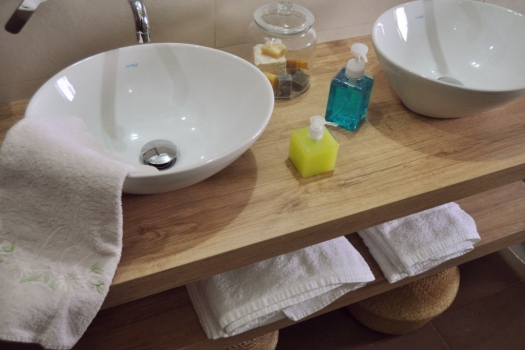
Elegant simplicity
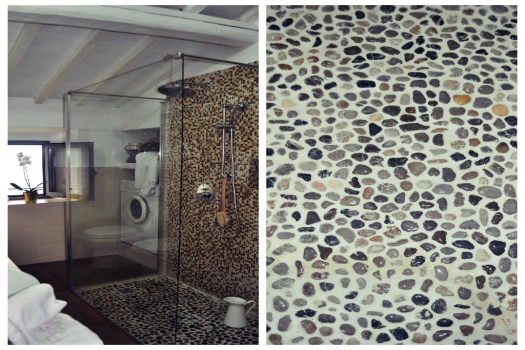
Want to try a zen experience?

Blog Under Construction
 Enriched mosaic, natural pebbles, sanitary ware conforts and enjoy a lovely view over Florence!
Enriched mosaic, natural pebbles, sanitary ware conforts and enjoy a lovely view over Florence!

Elegant simplicity

Want to try a zen experience?
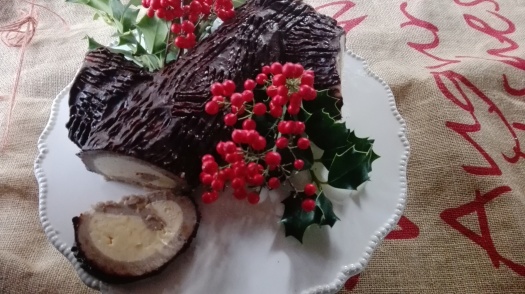
Il dolce delle feste di Natale per eccellenza! Quest’anno il Ceppo di castagne, cioccolato e crema di burro all’essenza di arancia, è arrivato sul tavolo apparecchiato per la Befana giusto in tempo l’ultimo giorno. Grazie alla mamma che, continuando la tradizione di famiglia, addolcisce i nostri palati, racconta anedotti quest’ultimo giorno di festa
This is the ultimate Christmas cake ! This year the Chestnut Log with chocolate and butter cream and orange, has showed up on our family table just in time on our holidays last day. Thanks to my mum who is carrying on our family tradition, sweetens our palates, tells stories on this last holidays day.
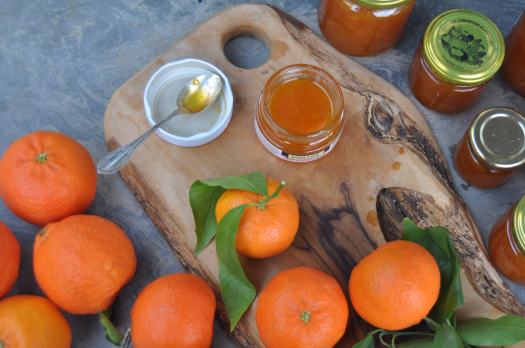 Yes, this is it. My favourite marmalade at Xmas. Easy to make with organic clementines, sugar & lemon. I basically use 2 kg clementines, 1 kg sugar and 2 lemons. Lovely taste on cottage cheese or a fresh slice of bread!
Yes, this is it. My favourite marmalade at Xmas. Easy to make with organic clementines, sugar & lemon. I basically use 2 kg clementines, 1 kg sugar and 2 lemons. Lovely taste on cottage cheese or a fresh slice of bread!
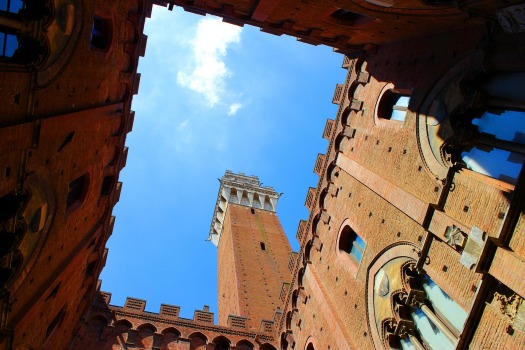
Siena & San Giminiano
(86 Km-1:15 away from the Casale)
Siena will immediately charm you with its characteristic medieval streets and the famous Piazza del Campo, where the renowned Palio, a horse race around the piazza, is run twice (July & August) every year in summer.Siena is said to have been founded by Senius, son of Remus, one of the two legendary founders of Rome. The Campo is dominated by the red Palazzo Pubblico and its tower, Torre del Mangia along with the Duomo of Siena. What to visit? Piazza del Campo, just standing at the center of the Piazza del Campo square, you will almost feel wrapped up in a warm embrace. Torre del Mangia, with its height of 87 meters, offers one of the most beautiful views of the city. And for sure the Duomo of Santa Maria Assunta & the Piccolomi Library.What to eat? A special Siena pasta are the Pici (like a thick spaghetti) usually with a sauce of sage and almonds. When getting to the dessert taste the Ricciarelli, with almonds, and the Panforte with almonds and candied fruit

San Gimignano, a small walled village about halfway between Florence and Siena, is famous for its fascinating medieval architecture and 14 towers that rise above of all the other buildings offering an impressive view of the city from the surrounding valley. Enjoy its local products including saffron and its white wine, the Vernaccia di San Gimignano.

To produce a rare and delicious olive oil with all my family’s hands : what can be more joyful?! If you visit Tuscany don’t forget to taste the Bruschetta: a slice of plain bread with new olive oil and salt.
For Italians, La Festa dell’Epifania on January 6th is as significant a holiday as Christmas Day; especially for Italian children!
The Feast of the Epiphany commemorates the 12th day of Christmas when the three Wise Men arrived at the manger bearing gifts for Baby Jesus.
According to the Italian legend, La Befana, a witch-like woman riding on a broom, refused to join the Wise Men on their journey to see the baby Jesus. When she regrets her decision, she sets out to bring gifts to the Child but never finds him. Instead, she leaves gifts for other children. Italian children leave out their shoes or put up stockings for the Befana to fill on January 5th, Epiphany Eve.
And the legend continues that every Epiphany Eve, the old, tattered and soot-covered Befana flies around the world on a broomstick and comes down chimneys to deliver candy and presents to children who have been good during the year. For those who have fallen a bit short of model behavior, la Befana will leave lumps of coal. Knowing that all kids can’t be perfect year-round, some shops in Italy sell carbone or black rock candy that actually looks like pieces of coal…so even those not quite perfect can still enjoy a sweet treat.
Unlike Santa Claus, La Befana has been an Italian tradition since the XIII century and comes from Christian legend rather than pop culture.
23 maggio si svolge la tradizionale Fiorita in ricordo del martirio di fra Girolamo Savonarola ed dei suoi due confratelli impiccati ed arsi sul rogo il 23 maggio 1498 in Piazza Signoria.
Una rappresentanza del Corteo del Calcio in Costume ,si muove da Piazza di Parte Guelfa e tra due ali di pubblico sfila fino Piazza Signoria,dove si schiera davanti la lapide che ricorda il martirio A seguire esce da Palazzo Vecchio,il Gonfalone di Firenze scortato dalla Famiglia di Palazzo e dal Sindaco,seguito da una rappresentanza di Frati Domenicani e dal coro del convento di San Marco che hanno precedentemente officiato una messa in suffragio nella Cappella dei Priori Dopo l’omaggio floreale da parte del Sindaco , il corteo si muove verso il Ponte Vecchio,dove petali di fiori sono gettati in Arno per ricordare la dispersione delle ceneri dei tre frati.
Girolamo nacque a Ferrara il 21 settembre 1452, terzogenito di un ricco mercante .
Dopo la morte del nonno, il padre Niccolò, desiderando avviarlo alla professione medica, gli fece studiare le arti liberali ciò nonostante,decise d’entrare in convento .
Sulla sua vocazione probabilmente influì la percezione di una forte decadenza dei costumi. Nel 1482, venne nominato lettore nel convento fiorentino di San Marco.dove rimase due anni senza tuttavia ,alcun successo.
Dal 1º agosto 1490 riprese in San Marco le predicazioni – sul tema dell’Apocalisse e poi anche sulla Prima lettera di Giovanni: formulò la necessità immediata del rinnovamento e della flagellazione della Chiesa e non temette di accusare governanti e prelati – “niente di buono è nella Chiesa… dalla pianta del piede fino alla sommità non è sanità in quella” – ma anche filosofi e letterati, viventi ed antichi: ebbe subito il favore dei semplici, dei poveri, degli scontenti e degli oppositori della famiglia de’ Medici, tanto da essere chiamato dai suoi contraddittori il predicatore dei disperati. Lorenzo il Magnifico lo fece ammonire più volte a non tenere simili prediche,anzi il frate , rispose di non curarsene, predicendo la prossima morte del Magnifico: In luglio, Girolamo venne eletto priore del convento di San Marco. Naturalmente, contrariamente alla consuetudine dei precedenti priori, non rese omaggio a Lorenzo e non si fece ammansire dai suoi doni e dalle cospicue elemosine; .
La notte del 5 aprile 1492 un fulmine danneggiò la lanterna del Duomo e molti fiorentini interpretano l’accaduto come un cattivo augurio; tre giorni dopo Lorenzo de’ Medici morì nella sua villa di Careggi, confortato dalla richiesta benedizione del Savonarola, come attestò il Poliziano.
Il prestigio del Savonarola aumentò anche grazie alla venuta di Carlo VIII e alla cacciata di Piero de Medici, In seguito alla fondazione della Repubblica Fiorentina, riuscì a diventare arbitro della vita fiorentina appoggiando Pierantonio Soderini, eminente personaggio politico in una riforma della costituzione della Repubblica per cui la città fu sottoposta ad un regime “Demo-teocratico”(1494).
Superate le prima difficoltà, anche se preso dall’attività politica, il Savonarola non si distolse dal predicare, varcando però i limiti di ciò che era “lecito” ad un religioso e si scontrò così con Papa Alessandro VI, a cui rimproverava i corrotti costumi. Egli, inizialmente, gli proibì di continuare la sua attività predicativa ma poichè Girolamo osò disubbidire all’ordine papale,due anni dopo circa, sopraggiunse la scomunica e l’appellativo di “eretico”.
La Repubblica fiorentina in un primo momento lo sostenne, ma poi, per timore dell’interdizione papale e per la diminuzione del prestigio del frate, gli tolse l’appoggio.
Il risorto partito dei Medici nel 1498 lo fece arrestare e processare per eresia. Il processo fu palesemente manipolato: Savonarola subì numerose torture . Alla fine venne condannato ad essere bruciato in piazza della Signoria con due suoi confratelli. All’alba del 23 maggio 1498, alla vigilia dell’Ascensione, i tre religiosi dopo aver ascoltato la messa nella Cappella dei Priori nel Palazzo della Signoria, furono condotti sull’arengario del palazzo stesso dove subirono la degradazione da parte del Tribunale del Vescovo. Dopo la degradazione i tre frati furono avviati verso il patibolo, innalzato nei pressi della Fontana del Nettuno in seguito compiuta dal Giambologna, e collegato all’arengario del palazzo da una passerella alta quasi due metri da terra. La forca, alta cinque metri, si ergeva su una catasta di legna e scope cosparse di polvere da sparo per bombarde. Fra le urla della folla fu appiccato il fuoco a quella catasta che in breve fiammeggiò violentemente, bruciando i corpi oramai senza vita degli impiccati. Le ceneri dei tre frati, del palco e d’ogni cosa arsa furono portate via con delle carrette e gettate in Arno dal Ponte Vecchio, La mattina dopo il luogo dove avvenne l’esecuzione apparve tutto coperto di fiori, di foglie di palma e di petali di rose. Nottetempo, mani pietose avevano così voluto rendere omaggio alla memoria dell’ascetico predicatore, iniziando la tradizione che dura tuttora. Il punto esatto nel quale avvenne il martirio e oggi avviene la Fiorita era indicato da un tassello di marmo, già esistente, dove veniva collocato il “Saracino” quando si correva la giostra. Questo lo si deduce da “Firenze illustrata” di Del Migliore, il quale così scrive: “alcuni cittadini mandavano a fiorire ben di notte, in su l’ora addormentata, quel luogo per l’appunto dove fu piantato lo stile; che v’è per segno un tassello di marmo poco lontano dalla fonte”. Al posto dell’antico tassello per il gioco del Saracino, v’è attualmente la lapide circolare che ricorda il punto preciso dove fu impiccato e arso “frate Hieronimo”. La lapide, in granito rosso, porta un’iscrizione in caratteri bronzei.
Caterina de’ Medici : Florentine cuisine at the court of Enrico IV
Florentine cuisine left the city borders in 1533, when Caterina de’ Medici married the King of France, Enrico di Valois. Caterina was only 14 years old at the time, but she was already a great food lover and wanted to bring her own chefs and bakers to France with her. With the arrival of the new queen, France discovered the aromas and tastes of authentic Florentine cuisine, which was served in the local courts. The local recipes that were taken to France include the “salsa colla”, today known as bechame sauce, onion soup, and ‘tongue in sweet bread’

Caterina de’ Medici, andatò sposa ad Enrico d’Orleans ed insegnò ai cuochi della corte di Francia la cucina toscana.
A lei è dedicato l’ambitissimo premio enogastronomico “Caterina de’ Medici” che ogni due anni conferisce riconoscimenti per la creatività e la competenza a professionisti italiani e stranieri, quasi un Nobel della cultura gastronomica, già insignito della Medaglia della Presidenza della Repubblica Italiana.
La cucina meditterranea è stata dichiarata ” patrimonio mondiale dell’Umanità “……la cucina fiorentina è ricca di ricette semplici e sane condite con un ottimo olio ed esaltate da un vino eccellente.
Florentine cuisine acquired a more than local dimension in 1533, when Caterina de’ Medici married Henry of Valois, King of France. Caterina was just 14 years old at the time, but was already fond of good food, and she took some cooks and pastry chefs with her to France. With the arrival of the new queen, France was introduced to the smells and aromas of Florentine court cuisine by way of recipes like salsa colla (now besciamella), onion soup and tongue in dolceforte (‘sweet and strong’).
The culinary fare of ordinary people was of course very different, and was based on simple, humble ingredients like bread, oil and fresh vegetables. And it was above all this “humble” cooking that was passed down from one family generation to the next, although some more elaborate recipes, like meats in dolceforte, have also survived.
Without a doubt the most celebrated Florentine dish in the world is the Florentine T-bone steak, which must be prepared using top-quality beef (never veal!) cut to a thickness of 5-6 cm and cooked on a charcoal grill, preferably using chestnut wood. It should be rare-done and dressed with salt, pepper and a drizzle of olive oil after cooking.The classic Tuscan first courses are the soup dishes: pappa al pomodoro and ribollita, hot bread-based soups that give way to panzanella in the summer months.
Apart from the steaks, other meats that feature in Tuscan cooking are game, pork (including arista, pork loin cooked in the oven with garlic and rosemary), stews and boiled meats. Florentines also have a passion for livers: pork livers are wrapped in a mesh and cooked on skewers, with abundant bay and slices of bread stuck between the bits of liver. Chicken liver, together with veal spleen, are the base ingredients for the very popular liver pâté canapés, an essential starter generally served with cold cuts like finocchiona, soppressata, sanguinacci, various kinds of ham, salami and sausage.
And if on your travels you happen to run across a trippaio, ask for tripe Florence-style with sauce, or lampredotto (the fourth part of the cow’s stomach, otherwise known in English as ‘reed tripe’) in a bread roll. These culinary delights are not only served in restaurants and trattorie but also from mobile stalls in streets and squares around the city. Genuine gourmands know that offal, when cooked properly, is a real delicacy!
Of all the various side dishes particular mention must be made of beans, simply boiled and dressed with, or rather drowned in, oil, or cooked all’uccelletto with sage and tomato. Other fine specialities include sweet and sour onions and beets or spinach, which are boiled and then tossed in a pan with oil, garlic and chilli. Desserts include traditional castagnaccio, made with sweet chestnut flour, schiacciata alla fiorentina and the very sweet schiacciata con l’uva (with grapes).
La parola “prego” in italiano si usa in molti contesti diversi.
Per esempio:
– in riposta a un grazie: “Grazie!” “Prego!”
– nel fare una proposta o un’offerta (linguaggio formale): “Prego, si accomodi.”
In questo caso rientra l’espressione :”Biglietti, prego!”usata dal controllore sui mezzi di trasporto:autobus,treno….
E’ una richiesta fatta in tono gentile e professionale.
– nel fare una richiesta (molto formale/gentile): “Prego, potrebbe indicarmi la via per…”
– per esprimere in modo formale o gentile di non aver capito (come sinonimo di “scusi?”): “Prego? Può ripetere?”
Allora …nel 1967…. ci voleva molta fantasia per credere di poter rendere vivibile questa vecchia colonica, ma ,quando si hanno 25 anni soltanto,………tutto sembra possibile!
Casale Fontibucci era in origine una torre di avvistamento d’epoca medievale divenuta poi, così dice la tradizione, residenza delle maestranze di Michelangelo. Attualmente viene utilizzata come abitazione dalla proprietaria che ha adibito una parte a bed and breakfast e casa ed appartamenti per vacanza.
Casale Fontibucci si trova nell’area di Bagno a Ripoli, a soli 20 minuti da Firenze e dalle sue finestre si gode una splendida vista della città.
Il bed and breakfast Casale Fontibucci è situato su di una collina che domina la campagna circostante ricca di vegetazione spontanea e campi coltivati a vigneto ed olivo.
L’edificio è stato ristrutturato nel rispetto dello stile tipico dei casali toscani costruiti con la bianca pietra Alberese.
Il bed and breakfast Casale Fontibucci offre accanto alla natura incontaminata e alla pace tipica della dolce campagna toscana, tutte le comodità per rendere il vostro soggiorno piacevole e tranquillo.
Once upon a time……..
“The view thence of Florence is most beautiful – far better than the hackneyed view from Fiesole” (E.M. Forster: A Room with a View)
Located in one of the most fascinating and evocative hillside areas in Florence, Casale Fontibucci, bed and breakfast and vacation home in Florence, is surrounded by olive-groves, cypress trees and vineyards. A convenient 20 minutes from Florence, the beautiful estate offers a fabulous view of the city from windows and gardens. A vacation paradise!
Originally an ancient watchtower in the Middle Ages, in the seventeenth century Casale Fontibucci was transformed into a farmhouse. Today, the buildings have been completely renovated, and equipped inside with all modern comforts while faithfully preserving the original aesthetic and architectural design of the buildings.
Casale Fontibucci has been featured, with numerous illustrations and an extensive description, in the book “The 70’s House” edited by Wiley and Sons. The book describes the most important houses of the 70s; “. Casale Fontibucci … was, “by repute, originally the home of Michelangelo’s stonemason. The site of the house lies on a hill commanding a view down the valley of the Arno to Florence in the distance past the picturesque array of hilltop palazzi and villas in between”.
In the midst of an unspoilt natural landscape and the characteristic peace of the gentle Tuscan countryside, the Casale Fontibucci bed and breakfast holiday home offers you all amenities for a pleasant and peaceful sojourn.
You must be logged in to post a comment.